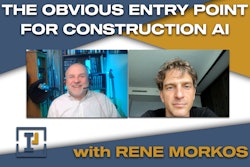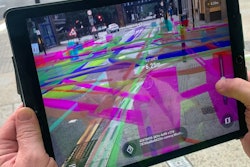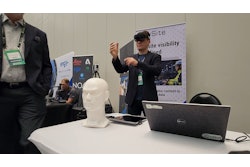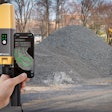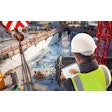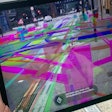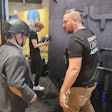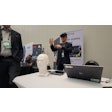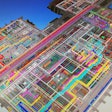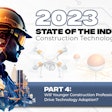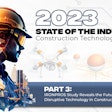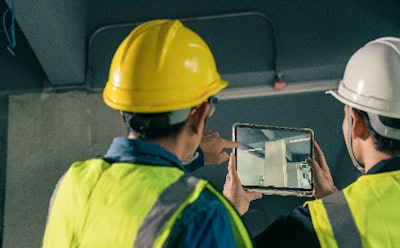
>PART I: Is Now the Time for Augmented Reality in Construction--Trimble AR Connect
PART II: vGIS Extends AR Solution for Utilities
PART III: XYZ Coming to Market With Ultra-Accurate Construction AR
Augmented reality (AR) and its cousin, virtual reality (VR) have penetrated pre-construction visualization, presentations to project owners and the training of operating engineers in simulated environments. But AR and its close kin mixed reality shines is in its ability to combine the physical world with the digital world so workers in the field can compare the reality of the construction site to a digital model during the work-in-progress phase.
For clarity, AR overlays digital elements on a view of the real world and is marginally more useful in some settings than mixed reality and which combines digital elements with a depiction of the real world in context—with Pokemon Go as a popular example.
Construction AR in the field is already being used both in horizontal and vertical construction. Some use cases mirror those for digital reality capture, which creates imagery that after download and processing can help identify deviations from the model. AR enables these deviations to be spotted during construction, avoiding rework. In other cases, AR can provide an elegant way to call out the location of buried utilities and other project elements that are unseen with digital enhancement.
Contractors are looking for technology for these and other use cases for several reasons, including the discontinuation of an early offering that had been adopted by some contractors, primarily for use indoors on vertical construction projects. Contractors using VisualLive, a tool to bring BIM to the field in the context of augmented reality, is being discontinued by Unity, which acquired VisualLive in March of 2021. According to the Unity website, VisualLive users can continue to use the solution until the end of their subscription or until June 30, 2024 when they will lose access to the application and any stored project data.
Unity did not return correspondence on the discontinuation of the product.
Emerging and Incumbent Construction AR Solutions
The discontinuation of one product tends to create demand for others in the category, but so does innovation and the presence of stable, proven solutions that risk-averse contractors may gravitate to. Construction AR offerings will include both software and hardware components, and the headsets required to deliver a usable hands-free AR experience. Early AR efforts in construction including the Daqri Smart Glasses and a similar product from XOI Technologies, the XOne smart glass, have yielded to broader products like the Microsoft Hololens and more hardware-agnostic solutions.
In an August 2023 discovery call we got a thorough update on the incumbent player in this space from Trimble Product Manager for AR/MR Solutions Ben Broad. The Trimble Connect AR construction AR product supports a range of model formats including Industry Foundation Classes (IFC), Navisworks, Sketchup and others, and also integrates with Trimble Connect, the company’s collaboration platform.
“There are a bunch of use cases,” Broad said. “The key thing is doing a 1:1 scale visualization of the model in the context of the job site. You can drop a model on the table, spin around, boil it toto the jobsite at 1:1 scale, line it up and get it locked into what you are actually constructing and working on. You can see things related to the physical world, including what is not beinghas not been captured. From this visibility, you can learn a huge amount and solve issues.”
The model is an expression of the design, and Trimble Connect AR combines this with the facts on the ground.
“Models will have a lot of information, but sometimes they don’t have certain things in them,” Broad said. “Trimble Connect AR can support construction phasing and influence how to build something, help looking for discrepancies, omissions, or clashes. These errors could be in the model itself or amount to conflicts between the model and the existing physical reality.”
Broad said his group is working towards adding progress tracking and discrepancy tracking/dispositioning as well. But current features help reduce visual clutter in an AR view to make it easier to spot discrepancies.
“We make it easy to change the transparency or visibility of the model,” Broad said. “If a contractor needs to repour after concrete for instanceto carry out a pre-pour inspection, we can make sure the sleeves are in, and a user can quickly check to make sure they are in approximately the right location.”
Models loaded to the wearable can be updated at various periodicities, according to Broad—continuously, weekly, or depending on the fluidity of the model.
“The software can always push updates and iterations via wifi,” Broad said. “The headset is designed to always update when it is online, pulling down an update if it is there. The AR function works offline as well.”
Trimble Connect AR users can get these AR benefits through the Trimble X10 headset, which is created in partnership with the Microsoft Hololens 2 team. This partnership extends the Hololens 2 with field-ready features including an intuitive interface and a flip-up screen for clear and unobstructed vision. The device is also certified for use in safety-regulated environments by bodies including United Labs (UL), ANSI and OSHA, and has a coveted Ingress Protection Rating of IP50 for dust protection.
Construction Mixed Reality for the Masses
While the Trimble XR10 is the gold standard in AR user experience and accuracy, the cost and learning curve involved in purchasing and ramping up with a dedicated device limits the number of contractors and the number of employees at each one who can viably use the application in this fashion.
Fortunately, Trimble Connect AR delivers not just AR through the XR10, but mixed reality through mobile devices.
“Once we expand beyond the XR10, Trimble Connect AR becomes more ubiquitous,” Broad said. “We offer a mixed reality solution on an iPad and iPhone with 400 active users.”
Broad acknowledged there was some functionality giveback with the mobile app, but there are also attendant benefits and expanded use cases.
“Both are fundamentally doing the same thing, but it opens the solution up to more use cases,” Broad said. “One use case is doing a walk through with a client and viewing their project. So it is good for customer-facing interaction. On heavy-duty plant installations, you can walk operators through where the valves will be, where your terminal is and what it is going to be like to work in that environment. The app can be more collaborative, and can be used to resolve a confusing, complicated situation—just by holding up an iPad.”
Thanks to the Trimble collaborative infrastructure and Trimble Connect, users on-site can also open up what they are seeing to remote individuals and teams.
“That is super easy to do,” Broad said. “On the mobile device, you can literally connect tto most typical web meeting apps and directly share your screen application. We have customers that do site walks with a specialist engineer. They are able to walk around the site holding up the phone, understand the site and get comments on any issues from people 300 miles away. Users can do that on the XR10, phone on tablet.”
Users can also support their organization’s change management process using Trimble Connect AR.
“There is a workflow that takes a snapshot and sends it to Trimble Connect,” Broad said. “With any of these things, half the battle is solving the problem. With this technology, the majority of 75% of problems get resolved on the spot.”
Issues spotted or other observations that need to trigger business processes like a request for information (RFI), change order or remediation can be routed from Trimble Connect to other applications using integrations from Trimble DataXchange (formerly Ryvit).
“Microsoft Excel is our main integration partner,” Broad said. “But “Across the world, there are hundreds of project controls applications, many of which are highly regional,” Broad said. “(Oracle) Aconex is popular in Australia and New Zealand while Trimble ProjectSight or Procore are popular in North America.”
Trimble Connect AR Pricing and Market
Broad said Connect AR will be a fit for a broad spectrum of contractors and other users who are already using building information models (BIM) to support multiple business processes and phases in a project.
“If they already have a virtual design and construction (VDC) team and are doing something with models, coordinating with their subtrades, taking it to the next step in AR and VR is not a big jump,” Broads said.
Company size is less of a factor for who will or will not find value than construction discipline, with mechanical, electrical and plumbing (MEP) contractors, structural steel fabricators and precast concrete being strong fits.
Trimble Connect AR and its supporting software technologies are sold on a subscription that runs from thousands to tens of thousands, depending on the size of the project where the technology will be used. The Trimble XR10 is a one-time purchase that can be bundled in with a subscription to Trimble Connect.
